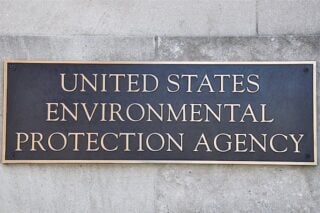The U.S. Environmental Protection Agency (EPA) has awarded the Oklahoma Department of Labor $202,970 to help protect school children and state workers from potential asbestos exposure as part of the Asbestos Hazard Emergency Response Act (AHERA).
AHERA mandates that local education agencies inspect schools for asbestos and create management plans in order to reduce any danger related to the toxic substance. Under the program, protection is provided via on-site surveillance wherever asbestos is discovered. Training and accreditation is also required by the program for anyone doing the asbestos work.
Any parent or anyone who works in a school has the right to be informed of the presence of asbestos and how the situation is being managed. Not all of the asbestos needs to be removed, but each school must have a management plan in place in case the asbestos becomes damaged or crumbles.
Parents also have the right to review the plan. If there isn’t an asbestos management plan in place, school officials should be confronted. If no action is taken, the local EPA should be notified immediately.
Asbestos removal isn’t always the solution after asbestos is found. Improper removal can cause asbestos exposure, so the EPA only requires it when there’s significant public threat, including renovations or demolitions. In many other cases, the EPA suggests in-place management where the asbestos remains for fiber control purposes, if there are no chances for the hazardous substance to be disturbed.
When asbestos is in good condition, it doesn’t usually present a hazard. However, when worn or damaged, asbestos poses a great threat to the health and safety of humans as fibers may flake off and become airborne. At this point, it’s possible for anyone in the vicinity to inhale the toxic fibers, which can become embedded in the chest.
Most buildings built in the U.S. before 1980 contain asbestos, so the dangerous mineral showing up in schools isn’t new. Not until the late 1970s were guidelines proposed to prohibit any new uses of the toxic mineral and warn individuals that any amount of asbestos—no matter how small—could result in the development of serious and fatal pulmonary diseases like asbestosis and mesothelioma cancer.
Information about mesothelioma was widely distributed at the time, so individuals slowly became aware of the true dangers. However, not everyone who owned or managed a building that contained asbestos addressed its presence.
Schools were no exception. Many contained asbestos insulation, and floor and ceiling tiles. A variety of other school building products made use of the material largely due to its excellent heat-and fire-resistant properties.





